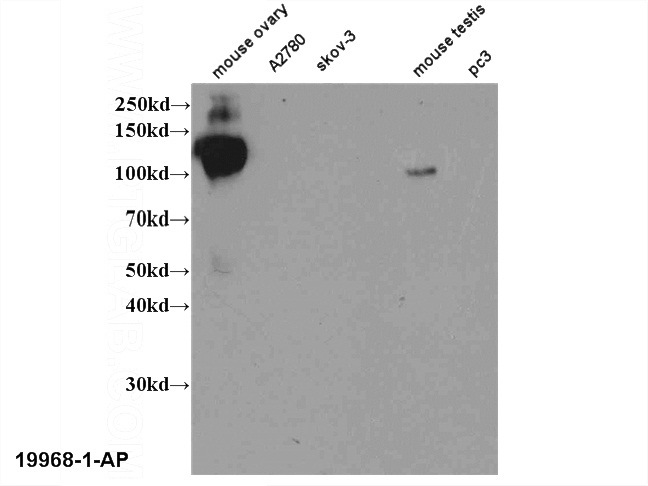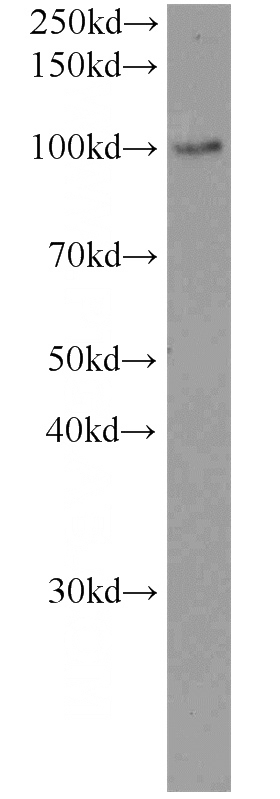-
Product Name
LHCGR antibody
- Documents
-
Description
LHCGR Rabbit Polyclonal antibody. Positive WB detected in mouse testis tissue, mouse ovary tissue. Observed molecular weight by Western-blot: 100kd
-
Tested applications
ELISA, WB
-
Species reactivity
Human,Mouse,Rat; other species not tested.
-
Alternative names
FLJ41504 antibody; LCGR antibody; LGR2 antibody; LH/CG R antibody; LH/CGR antibody; LHCGR antibody; LHR antibody; LHRHR antibody; LSH R antibody; Luteinizing Hormone Receptor antibody
-
Isotype
Rabbit IgG
-
Preparation
This antibody was obtained by immunization of Peptide (Accession Number: NM_000233). Purification method: Antigen affinity purified.
-
Clonality
Polyclonal
-
Formulation
PBS with 0.02% sodium azide and 50% glycerol pH 7.3.
-
Storage instructions
Store at -20℃. DO NOT ALIQUOT
-
Applications
Recommended Dilution:
WB: 1:200-1:2000
-
Validations

WB result of Catalog No:112214(LHCGR antibody).

mouse testis tissue were subjected to SDS PAGE followed by western blot with Catalog No:112214(LHCGR antibody) at dilution of 1:500
-
Background
LHCGR, also named as LCGR, LGR2, LHRHR LHR and LSHR, belongs to the G-protein coupled receptor 1 family and FSH/LSH/TSH subfamily. LHCGR is a receptor for lutropin-choriogonadotropic hormone. The activity of LHCGR is mediated by G proteins which activate adenylate cyclase. Defects in LHCGR are a cause of familial male precocious puberty (FMPP). Defects in LHCGR are a cause of Leydig cell hypoplasia (LCH).
-
References
- Nozawa K, Nagaoka K, Zhang H. Neonatal exposure to 17α-ethynyl estradiol affects ovarian gene expression and disrupts reproductive cycles in female rats. Reproductive toxicology (Elmsford, N.Y.). 46:77-84. 2014.
- Ball CB, Rodriguez KF, Stumpo DJ. The RNA-binding protein, ZFP36L2, influences ovulation and oocyte maturation. PloS one. 9(5):e97324. 2014.
Related Products / Services
Please note: All products are "FOR RESEARCH USE ONLY AND ARE NOT INTENDED FOR DIAGNOSTIC OR THERAPEUTIC USE"
